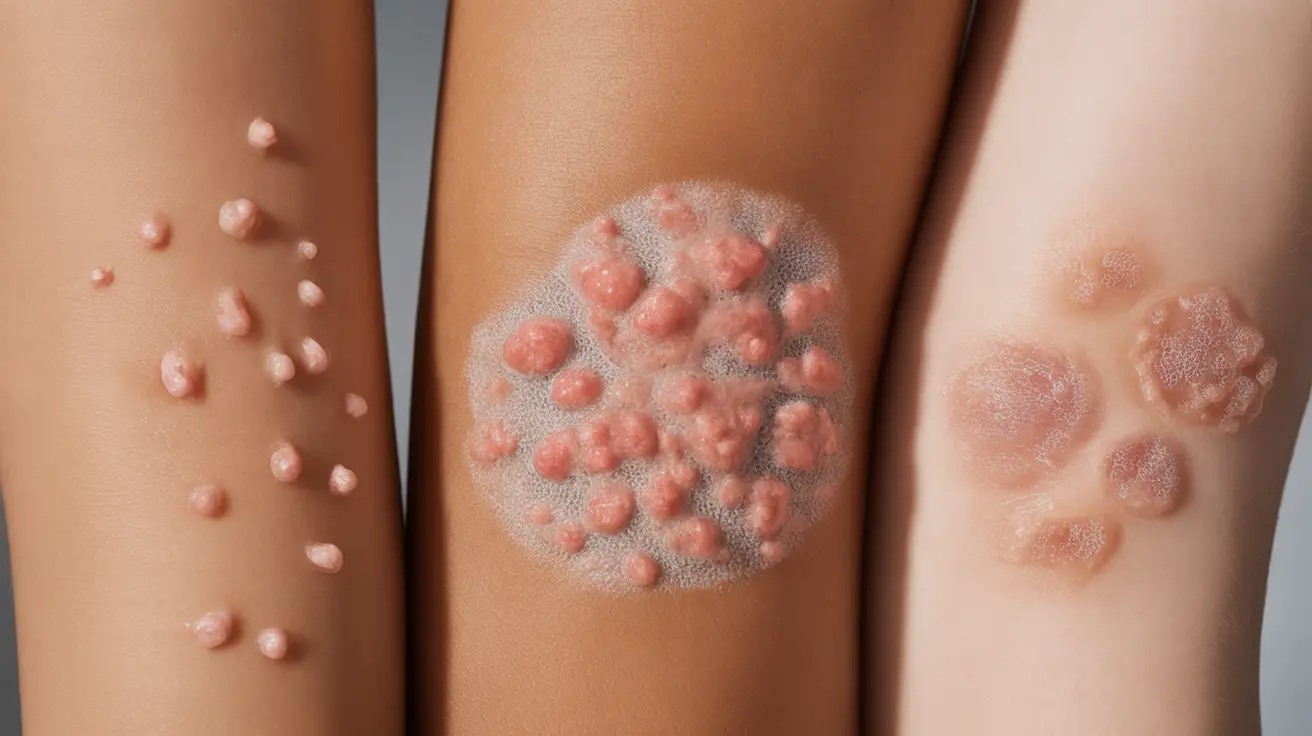Recognizing psoriasis can be challenging, especially since this chronic skin condition presents differently across various skin tones and body locations. Understanding how psoriasis appears visually is crucial for early detection and proper management of the condition. This comprehensive guide will help you identify different types of psoriasis through detailed descriptions of their visual characteristics.
Key Visual Characteristics of Common Psoriasis Types
Each type of psoriasis has distinct visual features that can help in identification. Learning to recognize these characteristics is essential for proper diagnosis and treatment.
Plaque Psoriasis Appearance
Plaque psoriasis, the most common form, appears as raised, red patches covered with silvery-white scales. On darker skin tones, these plaques may appear purple or darker brown, with gray scales. The patches typically occur symmetrically on the body and can vary in size from small spots to large areas.
Guttate Psoriasis Identification
Guttate psoriasis manifests as small, drop-shaped spots that are salmon-pink in color on lighter skin and purple or dark brown on darker skin. These spots are typically smaller than plaque psoriasis lesions and often appear suddenly, frequently following an infection.
Inverse Psoriasis Characteristics
Inverse psoriasis appears as smooth, bright red patches in skin folds. In darker skin tones, these areas may appear brown or purple. Unlike other types, inverse psoriasis doesn't typically show scaling due to the moisture in fold areas.
Common Psoriasis Locations and Appearances
Scalp Psoriasis
Scalp psoriasis can range from mild scaling to thick, crusty plaques that extend beyond the hairline. It may be confused with severe dandruff but typically has more defined edges and thicker scaling. While it can cause temporary hair loss due to intense scratching, the hair usually grows back once the psoriasis is treated.
Nail Psoriasis Signs
Nail psoriasis has several distinctive features:
- Pitting (small depressions in the nail surface)
- Onycholysis (separation of nail from the bed)
- Oil drop or salmon patches under the nail
- Thickening and crumbling of the nail
Body Distribution Patterns
Psoriasis commonly appears in specific body locations:
- Elbows and knees
- Lower back
- Scalp
- Behind the ears
- Navel area
- Skin folds
Frequently Asked Questions
What do different types of psoriasis look like on various skin tones? Psoriasis appears differently across skin tones. On lighter skin, patches typically look red with silver scales. On darker skin, lesions appear purple or darker brown with gray scaling. The texture and pattern remain consistent across skin types, but the coloration varies significantly.
How can I recognize plaque psoriasis versus guttate or inverse psoriasis through images? Plaque psoriasis shows larger, well-defined patches with silvery scales. Guttate appears as smaller, drop-shaped spots without heavy scaling. Inverse psoriasis presents as smooth, red (or dark brown/purple) patches without scaling in skin folds.
What are the common locations on the body where psoriasis plaques appear in photos? Psoriasis commonly appears on elbows, knees, scalp, lower back, and in skin folds. These locations are consistent across different types of psoriasis, though the appearance may vary by location and type.
How does scalp psoriasis appear in pictures, and can it cause hair loss? Scalp psoriasis appears as thick, scaly patches that may extend beyond the hairline. While it can cause temporary hair loss from scratching, the hair typically regrows once the psoriasis is controlled.
What visual signs distinguish nail psoriasis from other nail conditions? Nail psoriasis is characterized by pitting, separation from the nail bed, salmon-colored patches under the nail, and nail thickening or crumbling. These signs are distinct from fungal infections or other nail conditions.




